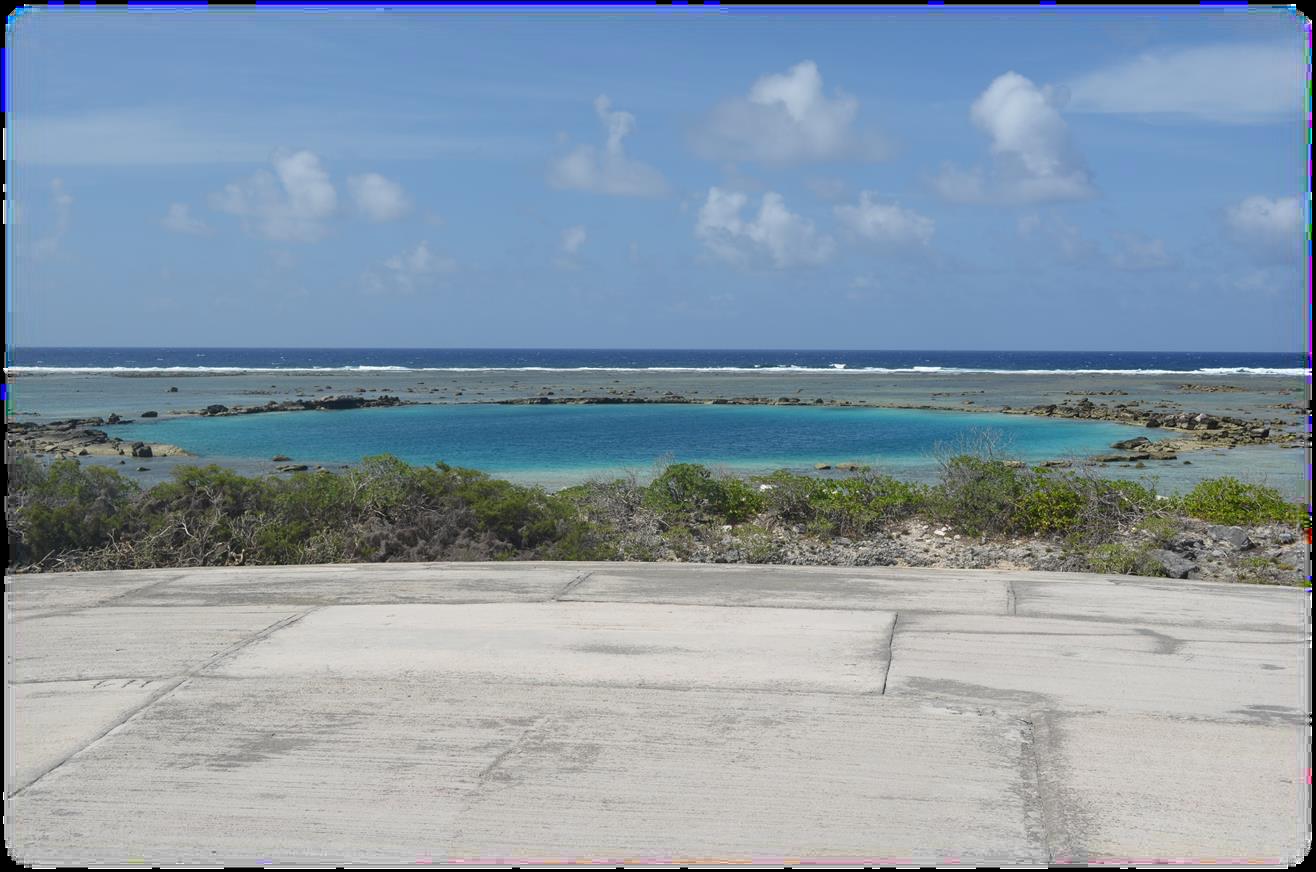Public Health
Radiological cleanup At Enewetak Atoll
From 1948 to 1958, the U.S. conducted 43 nuclear tests on the Enewetak Proving Ground at Enewetak Atoll in the Pacific Ocean. The government began planning the cleanup of Enewetak Atoll in the early 1970s, after deciding to return the atoll to the Trust Territory of the Pacific Islands. Approximately 6,000 Veterans participated in the cleanup project, which ran from May 1977 through May 1980.
The Veterans participating in cleanup wore protective clothing and radiation dose measuring devices when needed and had regular radiation checks. Also, they were restricted access to contaminated islands to further minimize exposure to radiation.

Concrete Exterior of the Cactus Crater Containment Struture
U.S. Department of Energy
The U.S. government officially returned the atoll to the Marshall Island Republic in 1986. Today, all the atoll islands and the lagoon are accessible except for Runit Island, which remains quarantined. The residual soil contamination from all the other islands was placed in the “Cactus Crater” on Runit Island. The crater was covered by a concrete dome called the Cactus Crater Containment Structure.
Possible health risks
Veterans who participated in the cleanup at Enewetak Atoll encountered low levels of radiological contamination, and have a low risk of health problems. Today, residents have very little or no intake of residual radionuclides, with annual radiation doses below U.S. averages.
Health concerns?
If you are concerned about possible health issues related to participating in the cleanup effort at Enewetak Atoll, talk to your health care provider.
Compensation for health problems
If you took part in cleanup of Enewetak Atoll, from January 1, 1977, through December 31, 1980, VA presumes that you had exposure to radiation.
Read more about Enewetak Atoll a presumptive location under the PACT Act. Learn more about health and disability benefits for radiation exposure.




















